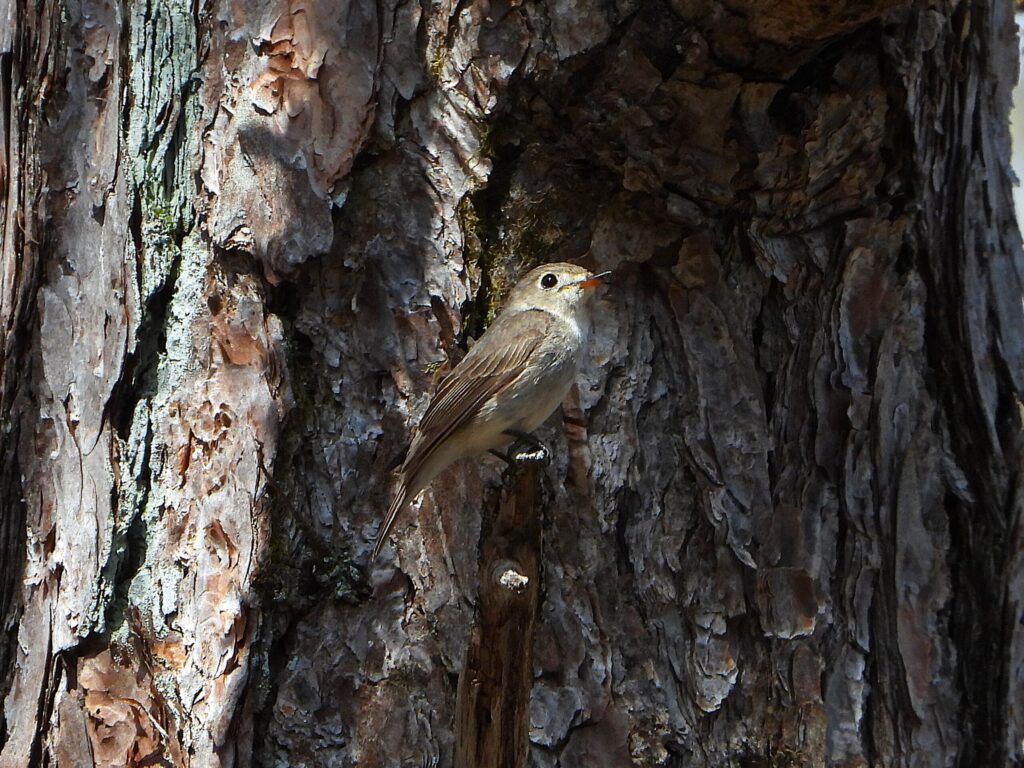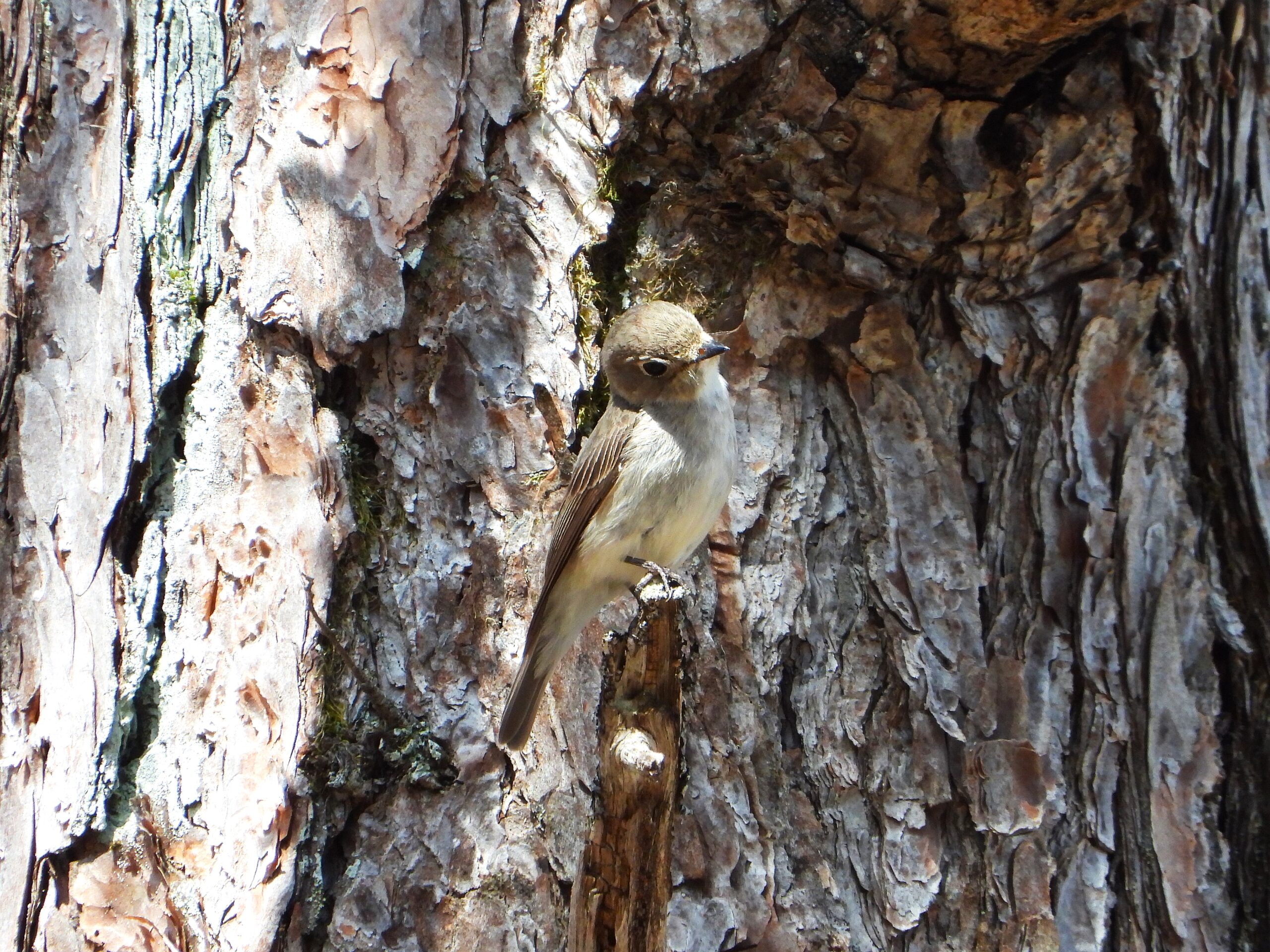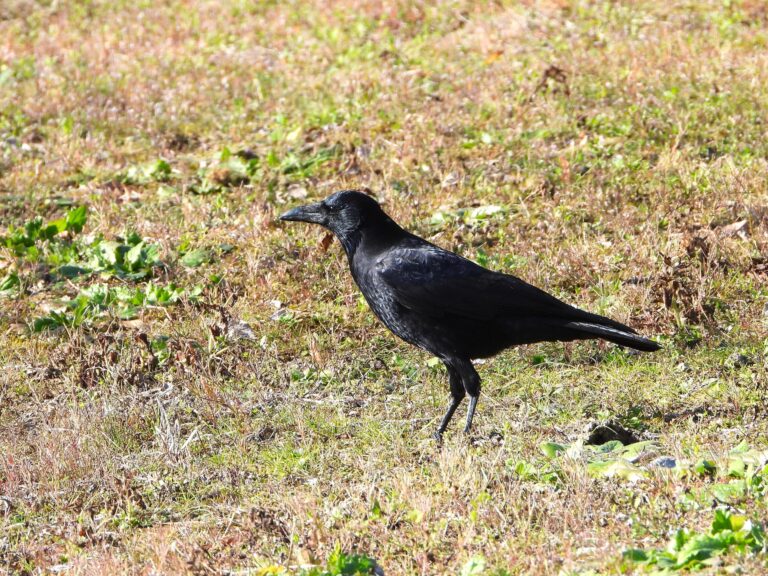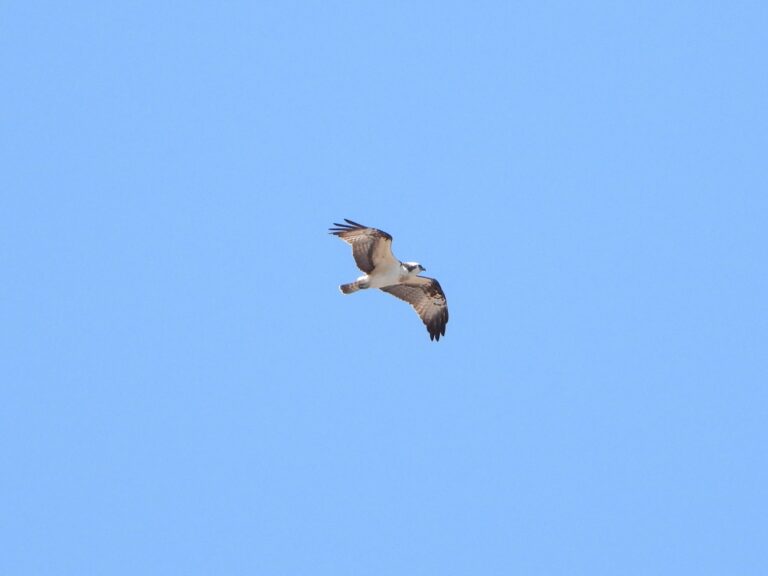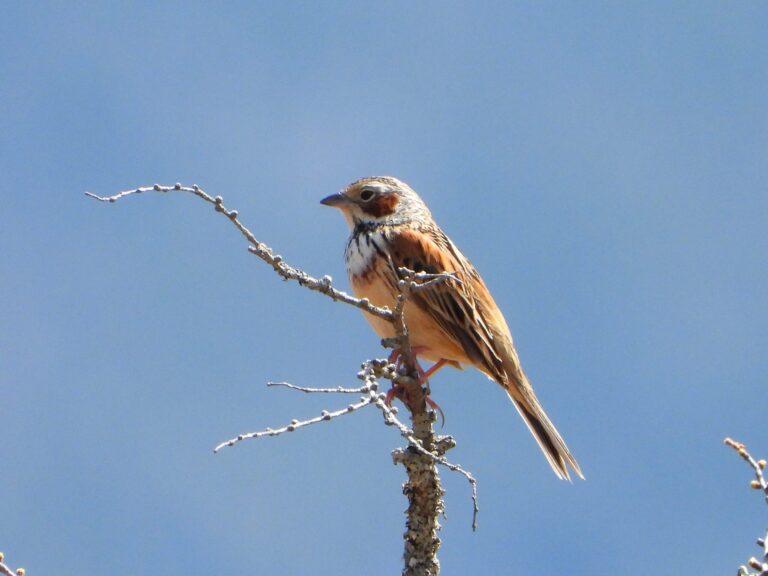Asian Brown Flycatcher (Muscicapa dauurica) – Wildlife of Japan
Introduction
The Asian Brown Flycatcher (Muscicapa dauurica) is a small migratory songbird that visits much of Japan from spring to autumn. Although modest in color, it is admired for its large dark eyes and calm, watchful behavior. During migration, it can even appear in city parks, making it approachable for both beginners and photographers.
Appearance
This bird measures about 13 cm in length, with gray-brown upperparts, clean whitish underparts with little to no streaking, and a pale eye-ring surrounding its dark eyes. Juveniles show faint pale spotting on the head, back, and wings. The short, broad-based bill is well-suited for catching insects in flight. Compared with the Dark-sided and Grey-streaked Flycatchers, this species has the cleanest and least-streaked underparts.
Habitat & Distribution
The Asian Brown Flycatcher favors bright deciduous or mixed forests and edges from lowlands to hills, often perching on horizontal branches for short aerial sallies. It is a summer visitor throughout Japan—from Hokkaido to Kyushu—and appears in parks and temple groves during migration. Outside Japan, it breeds across northeastern Asia and winters in southern and southeastern Asia.
Where to See in Japan
You can observe this bird from April or May until September or October. In summer, search in mountain forests or wooded valleys; during migration, check urban greenspaces and shrine woods. It has been recorded even in well-wooded city parks such as those in Kyoto.
Behavior
This species hunts insects using a “perch-and-sally” technique—flying out from a low or mid-level branch to snatch prey in midair and often returning to the same perch. Its song is soft and high-pitched, while the call is a simple, short “tsee.” Field studies consistently describe these patterns for this summer visitor.
Diet
It feeds mainly on flying insects, occasionally gleaning small arthropods from foliage. This feeding style gives rise to its name, “flycatcher.”
Reproduction
The nest is a small, cup-shaped structure camouflaged with moss and lichen, usually placed on a horizontal branch. A typical clutch contains four to five eggs. The female incubates for about 12–14 days, and the chicks fledge roughly two weeks after hatching.
Conservation
Globally, the Asian Brown Flycatcher is classified as Least Concern by the IUCN. In Japan, populations are generally stable but locally declining in some regions, such as Kyoto Prefecture, due to forest loss and urban disturbance. Conservation efforts should focus on maintaining forest habitats and minimizing human impact during breeding.
Author’s Impression
I found this Asian Brown Flycatcher in a quiet forest. It perched motionless on a low branch, surrounded by soft light filtering through the trees. Although small and plain, its dark eyes carried a calm presence that perfectly matched the silence of the woods. Watching it dart out for insects and return to the same perch felt like witnessing the gentle rhythm of the forest itself.
